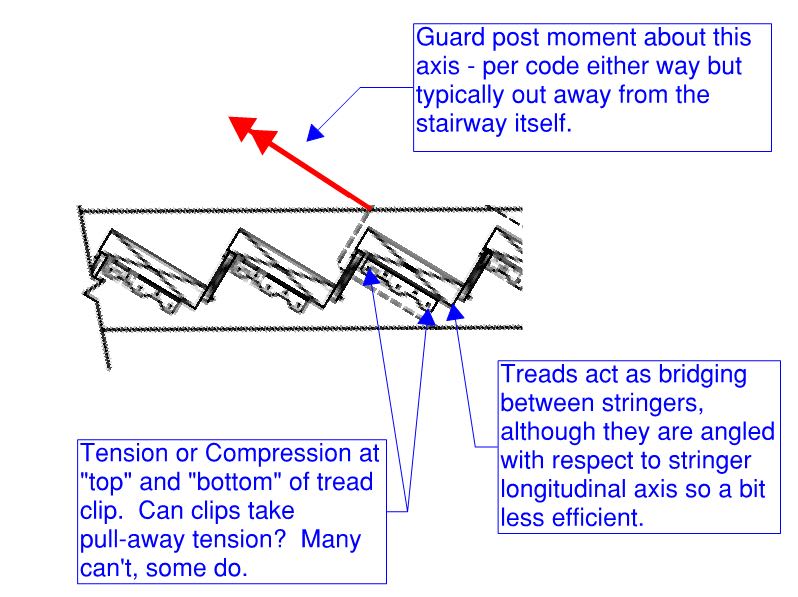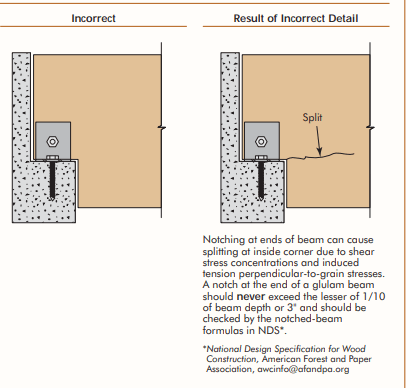VA-Struct-Engr
Structural
Hello everyone.
I am designing a wood stair stringer. The member size is 3 1/2"x14" Glulam (exterior use). The treads (3x12 SYP) are attached to the stringers with Simpson TA9 angles. See attached PDF for a couple of details we are using.
The railing newel posts are at 4'-0" o.c. (1 1/2" pipe) and is attached to the top of the stringer. In the event of a lateral live load of 50plf at the top of the newel post (per ASCE 7), torsion will be applied to the stringer.
First of, does anyone typically look at torsion in a stringer design (be it wood or steel)?
Second, how do I go about looking at it from an analysis point of view? The treads will provide some support, but not sure how to quantify it. The stringer in the far side is against a 2x- wall, but not attached to the wall, so it will help somewhat but not sure how much.
Thank you for your thoughts in advance.
[URL unfurl="true"]https://res.cloudinary.com/engineering-com/image/upload/v1582292072/tips/stair_stringer_details_yyajgd.pdf[/url]
I am designing a wood stair stringer. The member size is 3 1/2"x14" Glulam (exterior use). The treads (3x12 SYP) are attached to the stringers with Simpson TA9 angles. See attached PDF for a couple of details we are using.
The railing newel posts are at 4'-0" o.c. (1 1/2" pipe) and is attached to the top of the stringer. In the event of a lateral live load of 50plf at the top of the newel post (per ASCE 7), torsion will be applied to the stringer.
First of, does anyone typically look at torsion in a stringer design (be it wood or steel)?
Second, how do I go about looking at it from an analysis point of view? The treads will provide some support, but not sure how to quantify it. The stringer in the far side is against a 2x- wall, but not attached to the wall, so it will help somewhat but not sure how much.
Thank you for your thoughts in advance.
[URL unfurl="true"]https://res.cloudinary.com/engineering-com/image/upload/v1582292072/tips/stair_stringer_details_yyajgd.pdf[/url]



